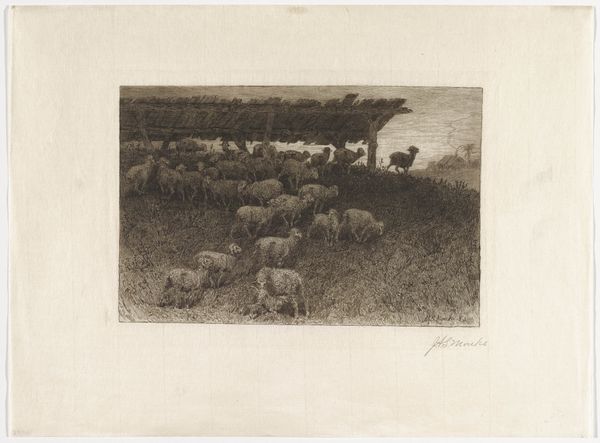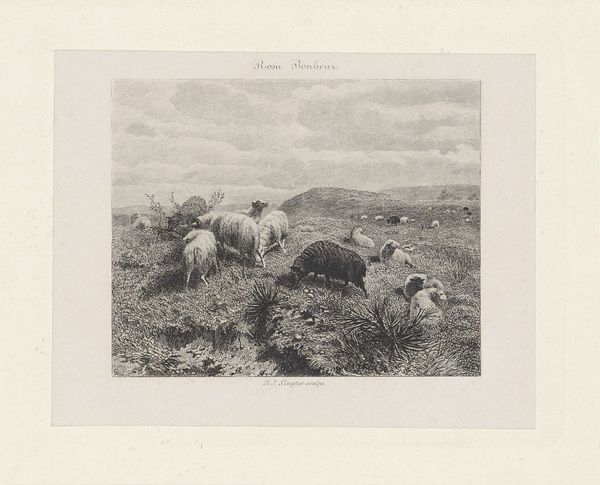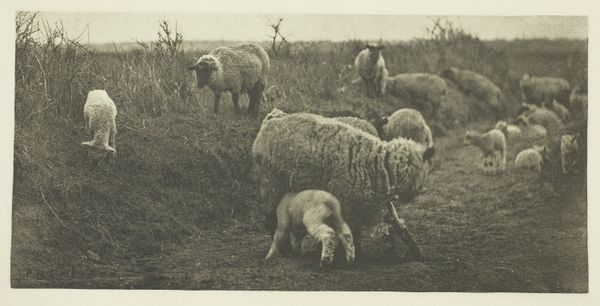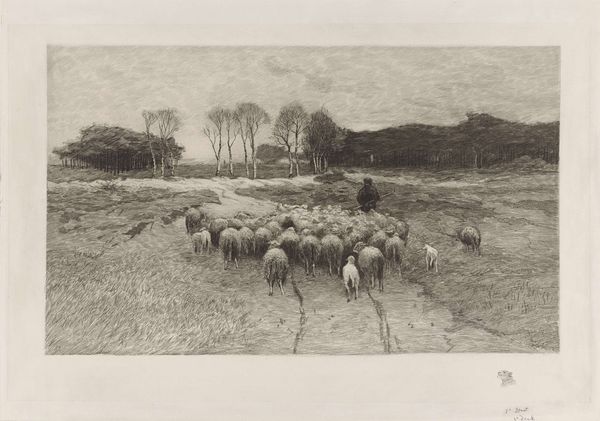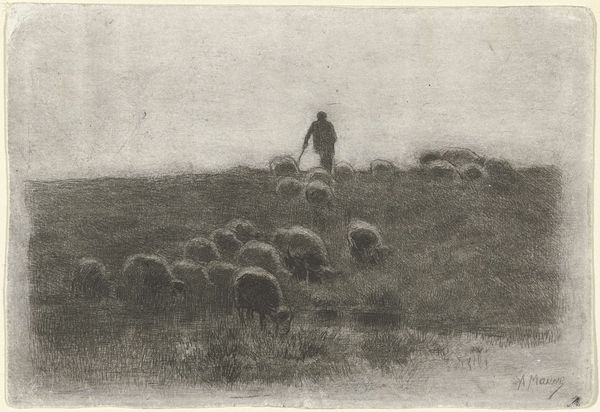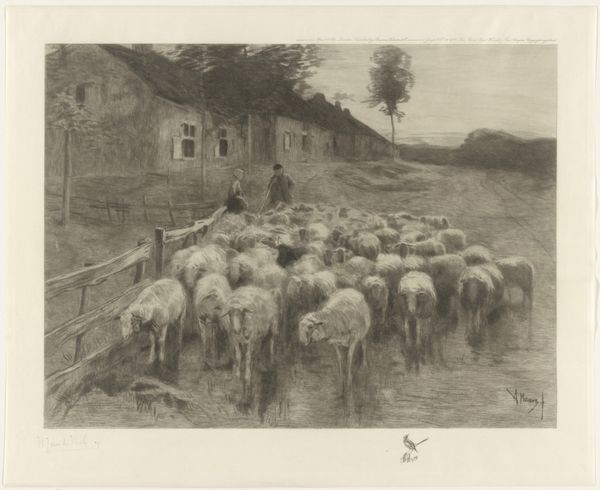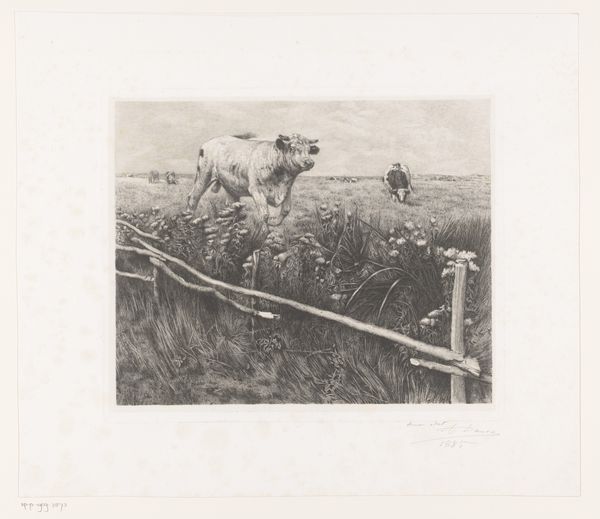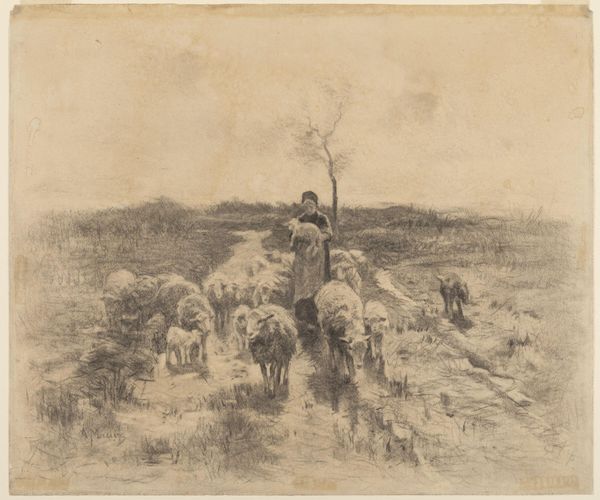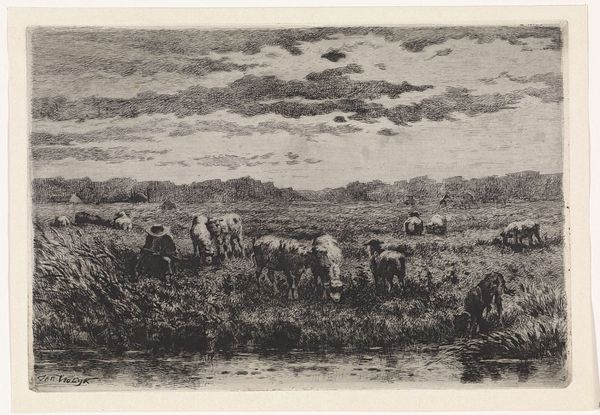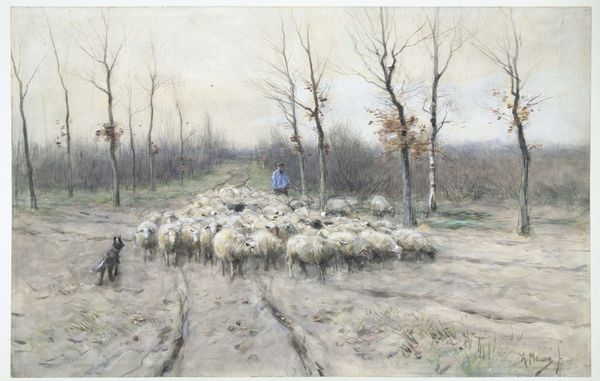
drawing, print, etching
#
pencil drawn
#
drawing
# print
#
etching
#
pencil sketch
#
landscape
#
pencil drawing
#
pencil work
#
genre-painting
#
realism
Dimensions: height 278 mm, width 376 mm
Copyright: Rijks Museum: Open Domain
Editor: Here we have "Herder met kudde schapen," or "Shepherd with a Flock of Sheep," possibly from 1889, an etching by Elias Stark held at the Rijksmuseum. The scene feels quite stark actually, rendered in these very fine lines. It's interesting to see a rural scene depicted through printmaking. What do you notice in this piece? Curator: I'm immediately drawn to the materiality of this print. Etching, as a reproductive medium, allowed for the democratization of images of rural labor. It removes the direct hand of the artist somewhat. Consider the societal implications: this scene, once only accessible perhaps as a unique painting for the wealthy, is now made available more widely through the printmaking process. Editor: So, you’re saying the *method* of creating the artwork impacts how it’s received? Curator: Precisely. And consider the social context. Late 19th century. Industrialization is pulling people to cities, yet we see here this enduring image of pastoral life. How might the target audience – potentially an urban middle class – have consumed this image? Was it a romanticization of a life they no longer lived, a commentary on their relationship to the land, or perhaps simply decoration? The sheep, too, are a commodity, sources of wool for clothing and textiles. Editor: That makes me consider the economics of the art itself. The etching process, while more accessible, still involved labor and specialized skill. And, the paper has value. Curator: Exactly. Every step of its production connects to systems of labor and exchange. By focusing on those material elements we shift our attention away from traditional art historical concerns like authorial intention or subjective feeling, towards a more grounded understanding of how art functions within social structures. Editor: I hadn't considered all of those layers when just looking at the sheep. I’ll definitely pay more attention to the materials used from now on. Curator: Indeed. Understanding art's material origins provides richer context and questions long held notions.
Comments
No comments
Be the first to comment and join the conversation on the ultimate creative platform.

